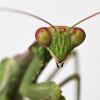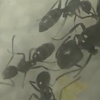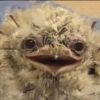Ok thanks again to everyone.
I am getting a small colony of Lasius Americanus this weekend, which I'm excited about! I have a couple more question if you all all still with me:
1) It would be great to still catch a queen this season, although I understand it's extremely late to the game. I wouldn't really care if they don't lay eggs until spring, it's still fun to get started. I am seeing lots of information about finding queens, but is there a resource that will help me to know exactly when ants are flying in my area? (Denver, CO). If I knew that ants were making flights, I'd be sure to go out and hunt for them.
2) If I get a colony with, say, 10 workers, can I move them into a mini-hearth straight away, or is it best to just leave them where they are? This is mostly just because the mini-hearth looks cool and is easy to view the ants. If it won't overly stress them out, I'd love to move them in (not sure exactly how to do it, also).
3) Hibernation time is coming! I have an unfinished basement but even in cold Denver winters, it doesn't get all that cold - maybe like 62 or 64 F. However, the concrete slab floor is always a bit colder, more like 50-55 degrees. I need to confirm this but I remember seeing that once, using one of those laser thermometers. If I put the ants right on the floor, the little founding formicarium is so small I was thinking maybe it would work. Will it be cold enough? But then, I hear of people putting ants in the fridge, which is an option for me - but that's more like 39-43 degrees and the door opening and closing is a big vibration. So, basement might better. Any thoughts on this?
4) Heating the mini-hearth or whatever container they are in - what is the best way to give them some warmth? A heating cable can't really go under the mini-hearth, and a lamp seems like a little cumbersome. At Tar Heels I read that he likes to keep the heat lamp up top,, to make the outworld warmer,, mimicking nature. Anyways,, how do people do this?
thanks everyone!



















